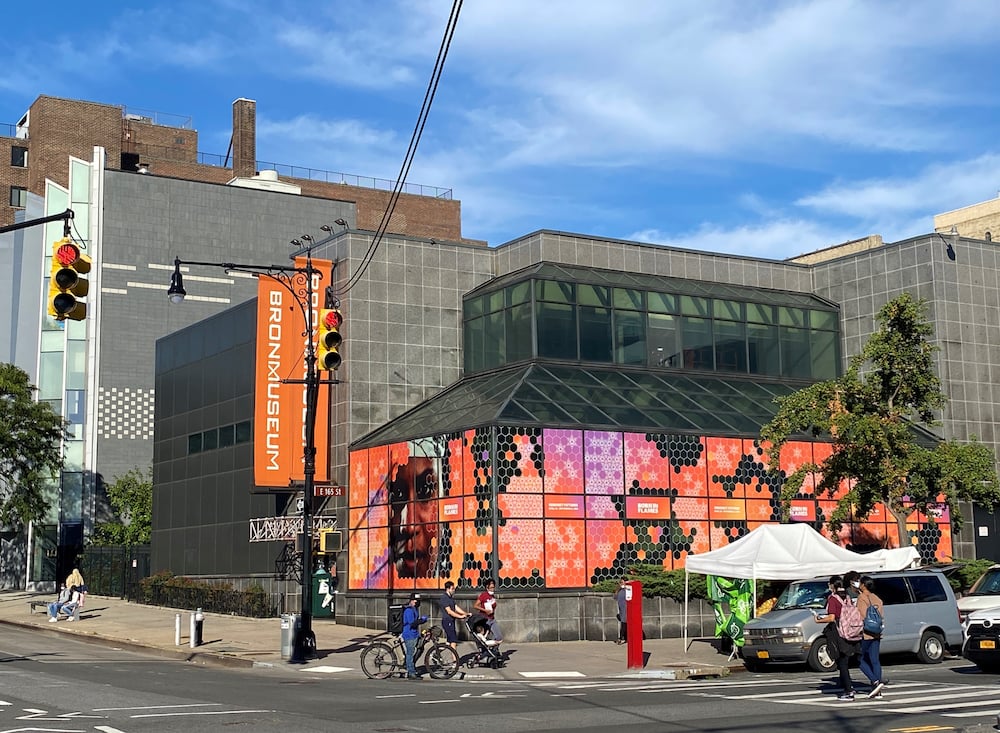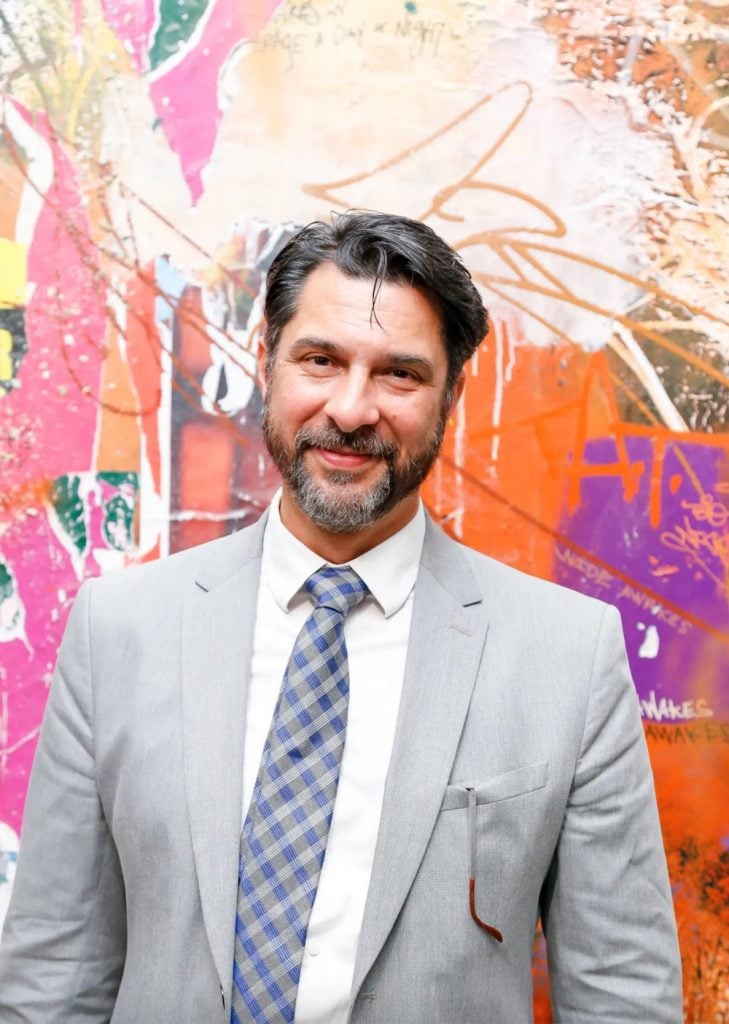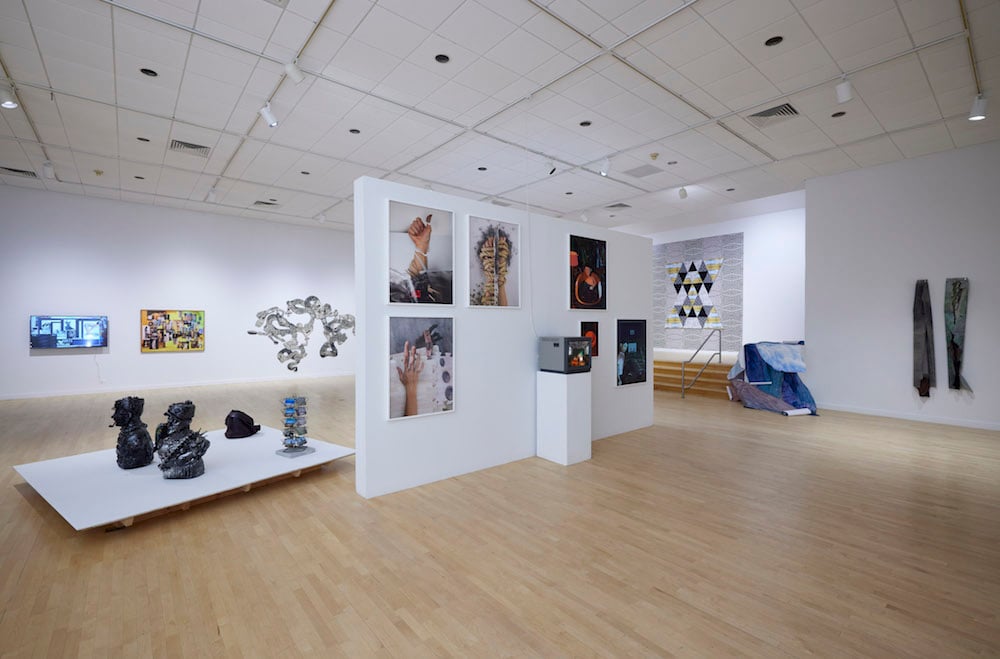Museums & Institutions
The Bronx Museum of the Arts Is Celebrating 50 Years by Announcing a $21 Million Capital Campaign and Major Renovation
Leaders say the transformed museum will further engage the local community.

Leaders say the transformed museum will further engage the local community.

Eileen Kinsella

The Bronx Museum of the Arts is marking its 50th anniversary with an ambitious $21 million capital campaign that will support a new entrance and lobby prominently placed at the corner of Grand Concourse and 165th Street.
The development marks an exciting new phase for the beloved institution, which has endured a few tumultuous years, including the untimely death of revered leader Holly Block in 2017 and some pandemic-related stops and starts with construction and renovation. It is one of only a handful of New York City institutions that offers entirely free admission.
“As I came on board, it was one thing I was really interested in, the transformation of the museum,” executive director Klaudio Rodriguez told Artnet News in a phone interview. He was appointed executive director in November 2020 after serving as deputy director since 2017. One of his first priorities, he said, was to “fast-track” the plan.
After reviewing proposals from 50 architectural firms, the board selected Marvel, whose founding principal is architect and urban designer Jonathan Marvel. “The pitch was really about the community as much as it was about trying to position the building for its next phase,” Marvel told Artnet News. “The critical thing at this point was to make sense of the new entrance, putting the front door in the obvious place where it should always have been, and where it was originally, when the building was a synagogue.”

Bronx Museum of the Arts executive director Klaudio Rodriguez. Photo: Brendan Cook/BFA. Courtesy of the Bronx Museum of the Arts.
Rodriguez noted that the seed for the entrance relocation was originally planted by Block during her tenure, and that everyone had long agreed that there were under-utilized spaces. He praised Marvel for their “holistic” approach to the project and extensive history of working with cultural institutions—including the Studio Museum in Harlem, the Battery Maritime Building downtown, and St. Ann’s Warehouse in Brooklyn—as well as more than three decades of experience. “We are partners in this process,” he adds.
A major plus is that the renovation will not interfere with the museum’s galleries or programming and it will remain open during the process, which is estimated to wrap up in 2025.
The Bronx museum’s last expansion, in 2006, was a $19 million north wing addition designed by Miami-based Arquitectonica. Marvel’s renovation will integrate the south wing into the existing extension and reimagine the lobby with a multi-level entrance that will have seating, a gathering space, and large street-facing walls for artwork. The relocation of the main entrance to Grand Concourse will open up the facade and serve as an extension of the sidewalk, offering multiple opportunities for art and public programming to be visible from the street.
Rodriguez hopes the transformation will bolster public engagement. “It will create much better flow throughout the museum and reintegrate the two halves,” he said. “I really want to make it a central part part of the community, where people can gather and feel like they’re in their living room.”

Installation view of “Bronx Calling: The Fifth Aim Biennial,” 2021. Photo: Argenis Apolinario. Courtesy of the Bronx Museum of the Arts.
The museum has been admission-free since 2012, and over the past decade, annual attendance increased from 25,000 to more than 100,000.
The renovation will be supported by city funds, with additional support from the state, and will be overseen by the New York City Economic Development Corporation (NYCEDC) on behalf of the New York City Department of Cultural Affairs (DCLA) and the museum itself.
The museum was founded in 1971 by community leaders and activists at a time when the borough was in crisis, and over the past five decades, has carved an identity as a museum dedicated to social justice. More than half of Bronx residents are of Hispanic or Latino origin.
Marvel, who was born and raised in Puerto Rico, says that working on behalf of the Latino community is “one of the great pleasures in my career.” He recounts being somewhat taken aback, albeit happily, upon learning the firm was selected: “During the interview, we did most of the talking and there were very few questions at the end. It turned out we were saying all the right things and there were few questions because they liked everything we said.”
Of the stiff competition for the project, he said: “Everyone wants to work on the Bronx Museum. This is a community-based organization, this is grassroots; it doesn’t get better than this. It’s a beautiful project and a great client.”